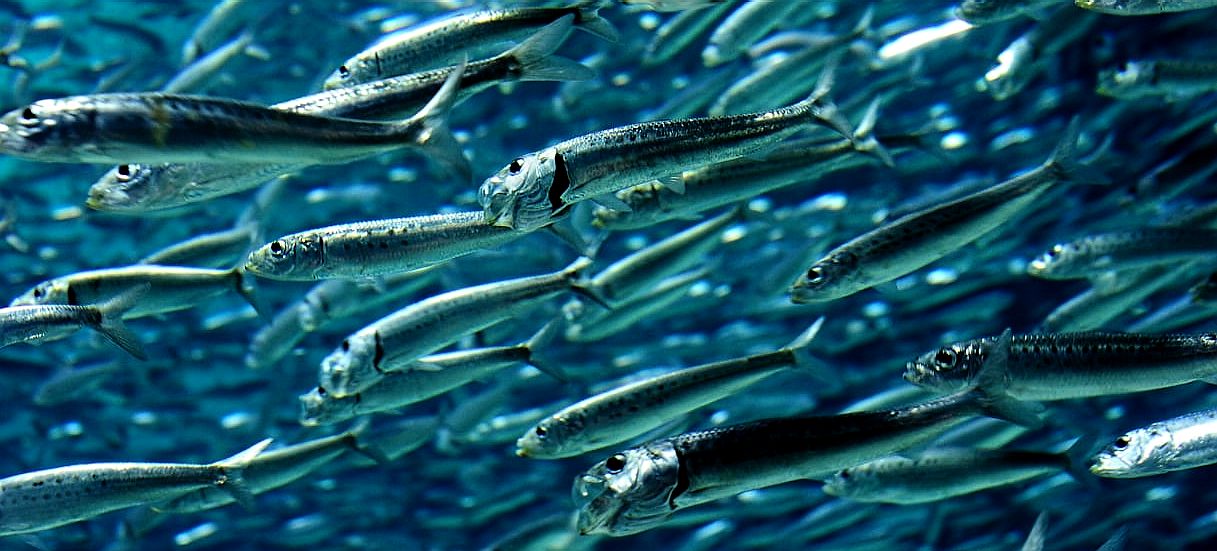|
LANTERNFISH
ABOUT -
CONTACTS - FOUNDATION -
HOME - A-Z INDEX

THERESA
MAY - has said her government is serious about improving the environment after pressure groups gave a lukewarm response to a 25-year green plan, praising its ambition but warning that it lacked sufficient proposals for immediate action.
According to an
article on the Algalita website and other sources, Lanternfish
are an essential part of ocean life and eco-functioning
concerning climate change and ingestion of marine plastics.

CLIMATE
CHANGE MIGRATION - Fish are moving to colder waters to
keep within their preferred temperature parameters. Cod and
sardines are moving north as the oceans warm.
Though burning fossil fuels is the primary cause of global warming, fossil fuels could also be driving climate change via a completely different mechanism involving ocean plastic debris and tiny, bioluminescent fish living hundreds of meters beneath the ocean’s surface.
Lanternfish (aka myctophids) are only a few inches long typically but so ubiquitous that they account for over half the ocean’s total fish-mass. They are vital to the ocean’s ability to sequester more carbon than all the world’s forests do on land through a daily mass migration that plays out in all seven seas.
By day, lanternfish avoid predators in deep, dimly lit waters, but they ascend nightly to the surface to gorge on carbon-rich plankton before descending back down where they deposit their carbon-rich poop. They also sequester carbon when eaten by larger fish.
Carbon sequestration by lanternfish is central to the overall role of marine environments in reducing human-caused CO2 emissions in the atmosphere – by an estimated 20-35 percent.
Thus, anything harmful to lanternfish could hinder the ocean’s capacity to act as a carbon sink. Alarming evidence that small bits of floating plastic debris resemble the plankton lanternfish feast on could spell trouble for them and, consequently, the climate.
Lanternfish are consuming ocean plastics
Most plastics are still derived from petroleum and natural gas and, for practical purposes, are non-biodegradable, even though they fragment during weathering into progressively smaller pieces.
Marine debris is composed primarily of plastics which accumulate in circulating ocean convergence zones called gyres. Since the groundbreaking discovery by the Algalita Marine Research Foundation in 1999 that plastic debris outweighed zooplankton in the surface waters of the N. Pacific gyre by a ratio of 6:1, there has been concern that small plastic fragments might be mistaken for food by plankivorous sea life.
A follow-up study revealed that more than a third of the stomachs of lanternfish captured at the ocean’s surface in the N. Pacific gyre contained plastic fragments. Importantly, ingested plastics were similar in size (1-3 mm) and color (clear, white and blue) to the area’s zooplankton.
Researchers at the Scripps Institute of Oceanography confirmed that lanternfish are consuming plastics and estimated that the weight of plastic debris consumed annually by fish in the in the N. Pacific gyre alone is 10s of tons.
Ingestion of plastic debris by lanternfish is thought to explain an otherwise head-scratching finding. Mass quantities of the plastics that are entering the ocean are disappearing, according to scientists who measured plastic debris in the surface waters of all five of the world’s major gyres. Importantly, the missing plastic is largely debris 2-3 mm in size, matching the lanternfish’s plankton diet.
Intestinal blockage, malnutrition and starvation are obvious potential dangers of consuming plastic debris, though chemicals associated with marine plastics might pose greater threats.
Oily toxic pollutants commonly found in seawater adsorb to the surface of plastics. Once ingested, the pollutants can transfer to the tissues of wildlife with potential for transfer up the food chain as smaller fish are eaten by larger ones.
Threat also stems from the basic building blocks of some polymers. Polycarbonate plastic, for example, is derived from BPA (bisphenol A), an estrogen mimic so harmful to the development of lab animals that use of polycarbonate plastics in baby bottles and sippy cups was banned in the United States in 2012.
The basic constituents of polyvinyl chloride (PVC) and polystyrene plastics are known or suspected carcinogens.
The myriad of additives which impart desired properties to plastic products add another layer of concern. Phthalate plasticizers and polybrominated flame retardants are common additives which interfere with hormonal systems in mammals, for example. Because additives are not bonded to the plastic polymer, they can leach out of ingested plastics into an organism’s tissues.
A recent study documented contamination of lanternfish tissue with chemicals both manufactured into plastics and adsorbed from seawater.
Furthermore, the buoyancy of plastics might interfere with the lanternfish’s ability to complete its migration from the surface back down to deeper waters, critical to sequestering carbon in the ocean’s depth.
Ocean plastic pollution to increase further
If lanternfish eating plastic debris represents a threat to climate stability, the situation is projected to only get worse.
Half of all plastics that ever existed were produced in just the last 13 years, according to a first-ever accounting of all plastic created anywhere on Earth since 1950. Of the 6300 million metric tons of plastic waste ever generated through 2015, roughly one-fifth has been recycled or incinerated, leaving four-fifths amassed in landfills or in the natural environment.
If current trends prevail through 2050, landfills and the natural environment will have accumulated 12,000 million metric tons of plastic waste.
In another first-ever study, researchers estimated how much plastic waste is entering the ocean yearly from the mismanaged discards of people in coastal countries worldwide – between 4.8 and 12.7 million metric tons or 1-5 percent of plastics generated.
Depending on buoyancy, some plastics float while others sink to the bottom or distribute throughout the water column. Given the ocean’s expanse and the rate that new plastics are entering, open ocean cleanup schemes are not a feasible solution.
The Solution
At the heart of the global climate crisis is mankind’s dysfunctional relationship to fossil fuels. As in any bad relationship, ignoring the problem only kicks the can down the road while the problem continues to fester.
In this case the road leads to greater climate instability which, in the very least, portends more violent storms and droughts, spread of human diseases, social, economic and political upheavals and mass species extinction.
The needed relational shift is to transition from an economy based on fossil fuels as a primary source of energy and material feedstock for manufactured goods to one thriving on renewable energy sources and manufactured goods which are biodegradable or easily recycled. Abandoning single-use plastics is also an imperative.
LINKS
& REFERENCE
http://www.bbc.co.uk/news/world-us-canada-42297370
https://www.usatoday.com/pages/interactives/trump-lawsuits/
https://longtailpipe.com/2017/08/28/trump-administration-fiddles-in-washington-while-houston-drowns-under-extreme-weather-hurricane/
https://www.nytimes.com/interactive/2017/climate/what-is-climate-change.html
https://www.sciencedaily.com/releases/2017/06/170628144848.htm
http://www.dailymail.co.uk/sciencetech/article-4819542/Climate-change-make-fish-SHRINK-30.html
https://www.seeker.com/earth/animals/climate-change-is-causing-fish-to-shrink
http://economictimes.indiatimes.com/news/politics-and-nation/climate-change-neglecting-oceans-no-longer-an-option/articleshow/59319549.cms
ABS
- BIOMAGNIFICATION
- BP DEEPWATER - CANCER
- CARRIER BAGS
- CLOTHING - COTTON BUDS - DDT - FISHING
NETS
FUKUSHIMA - HEAVY
METALS - MARINE LITTER
- MICROBEADS
- MICRO
PLASTICS - NYLON - OCEAN GYRES
- OCEAN WASTE
PACKAGING - PCBS
-
PET - PLASTIC
- PLASTICS
- POLYCARBONATE
- POLYSTYRENE
- POLYPROPYLENE - POLYTHENE - POPS
PVC - SHOES
- SINGLE USE
- SOUP - STRAWS - WATER
This
website is provided on a free basis as a public information
service. Copyright © Cleaner
Oceans Foundation Ltd (COFL) (Company No: 4674774)
2018. Solar
Studios, BN271RF, United Kingdom.
COFL
is a charity without share capital.
|

